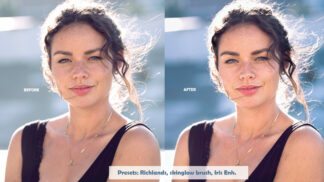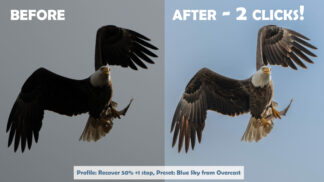With many zooms, the closer you focus, the shorter your focal length is. This is easier to experience than to explain. With any zoom lens (but especially a telephoto zoom), manually focus to infinity and zoom all the way out to the most telephoto setting. Look through the viewfinder at a door frame with the edges of the door near the left and right edges of the frame. Then, manually focus closer and closer until your lens is at its minimum focusing distance. If your lens exhibits focus breathing, the edges of the door frame will seem towards the center of the frame. Basically, as you focus closer, you also zoom the lens out to a wider angle, even if you don’t adjust the zoom. Because of focus breathing, zooming and focusing are always linked, even on many prime lenses. This isn’t a problem with your lens. In fact, most zooms exhibit focus breathing to some extent. Some primes do, too, though it tends to be more severe with zooms than with primes. For example, I strongly recommend a 70-200 f/2.8 zoom lens for portraits. To maximize the background blur and compress the facial features, a portrait photographer will zoom all the way to 200mm. However, when the photographer is focused close enough to the model to take a headshot, the maximum zoom on a Canon, Tamron, or Sigma 70-200mm lens is actually about 135 to 150mm. To put that another way, a 70-200mm lens only zooms to 200mm when it’s focused at a distant subject. When focused on something close, the maximum focal length is typically closer to 150mm. This video demonstrates the difference: https://www.youtube.com/watch?v=P80BpSQIIto Here’s another example of extreme focus breathing. In this video, a 200mm lens is actually longer than a 300mm lens: https://www.youtube.com/watch?v=5HZ2pvfmT_s Finally, here’s a comparison of the Tamron and Nikon 24-70 lenses, with one of the key differences being that the Tamron has focus breathing while the Nikon does not: https://www.youtube.com/watch?v=zu0AawE73C8 Focus breathing isn’t typically a problem for photographers. However, it can be an issue with some professional videography. Imagine a scene where the director wanted to change focus from a subject in the distance to a nearby subject. If you were to change the focus while filming using a lens that exhibited focus breathing, the lens would also seem to be zooming to a wider angle, which could be noticeable in the video and be distracting. For still photography, however, you can simply adjust your focal length or distance to the subject to get the composition you need. The one time focus breathing becomes a problem for still photographers is when performing focus stacking. If you perform focus stacking with a lens that exhibits focus breathing, you will need to compose the picture with the lens focused at the most distant part of the subject. As you take a series of pictures and focus closer with each picture, the lens (even if it’s a prime lens) will seem to zoom out to a wider angle. If you were to compose your picture focused on the nearest part of the subject, the lens would zoom in and crop your picture more than you wanted. For more information about focus stacking, refer to Chapter 12 of Stunning Digital Photography.





